Iris: types of aquarium fish and features of their maintenance
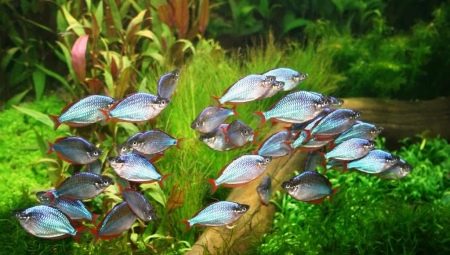
The underwater world is great and varied. Water paints with bright colors what looks gray and inconspicuous on land. The warm waters of the Earth's southern hemisphere are especially rich in bright colors. Many colorful aquarium fish come from the southern regions. Among the bright and colorful beauties, there is a fish carrying a rainbow on its scales. The name of this amazing fish is rainbow. Having settled a flock of such fish in the aquarium, you can admire this miracle of nature every day.

Species overview
In the warm waters of rivers and lakes in Australia, New Zealand and some islands in Indonesia, small fish are met, playing with all the colors of the rainbow. People did not remain indifferent to the beauty of this fish and transferred a live rainbow to the aquarium. The unpretentious fish easily adapted to the new environment and began to spread among aquarists, gaining popularity.
The size of the iris, the full name of which is Rainbow Melanothenia, is small. An adult reaches a length of 5-16 cm, depending on the species, of which there are about 70 in nature.
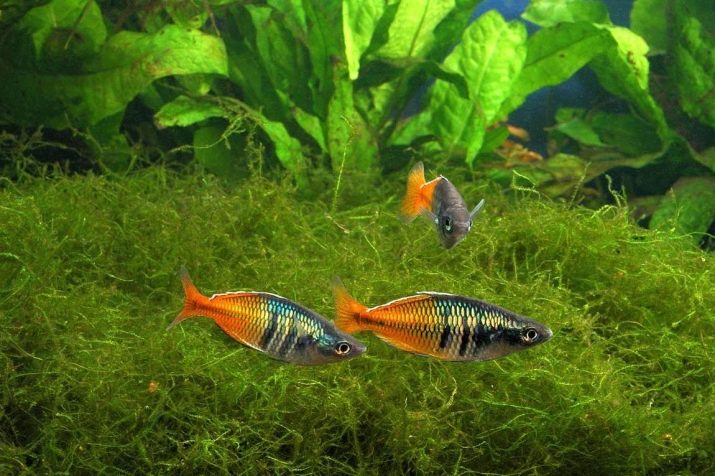
But for keeping in an aquarium, most often only a few types of melanothenes are taken. Let us list and briefly describe them.
- McCulloch's rainbow melanothenia... A small fish 60 mm long is found off the coast of Australia. Males of this variety are colored in a light shade of olive and brown. Red spots are visible on the operculums. The tail is colored bright carmine red.
The brightest and most beautiful color of the fish during spawning.
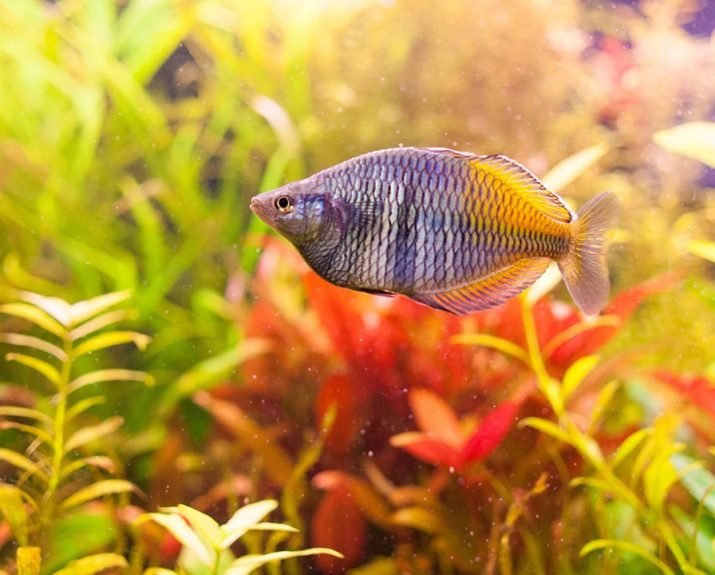
- Neon iris - a native of New Guinea, where it can be found in the densely vegetated waters of the Mamberamo River and the surrounding swamps.The bluish color of the scales has a neon effect, visible only in diffused light, which is provided by aquatic plants. The length of an adult fish is about 80 mm. Males differ from females in slightly larger size and slightly brighter color of red fins and tail.
Fish prefer to keep in a flock of 6-8 and love fresh, neutral, not too hard water in sedentary bodies of water. For such a flock, an aquarium with a volume of 60 liters is enough.

- Aquarium fish Turquoise iris (Melanotenia lake) originally from Papua New Guinea. It lives only in one small mountain lake Kutubu and the Soro rivulet that flows into it, which are located in the southern province of the Highlands. The size of the fish does not exceed 120 mm. The body color, blue with a yellowish tint, acquires an orange tint along the back during spawning. The color intensity of the fish depends on the nutrition. Blue melanothenia prefers fresh, relatively hard, very inactive water with a temperature of 20 ° -25 ° C. For a flock of 6-8 fish, you need an aquarium with a volume of at least 110 liters.
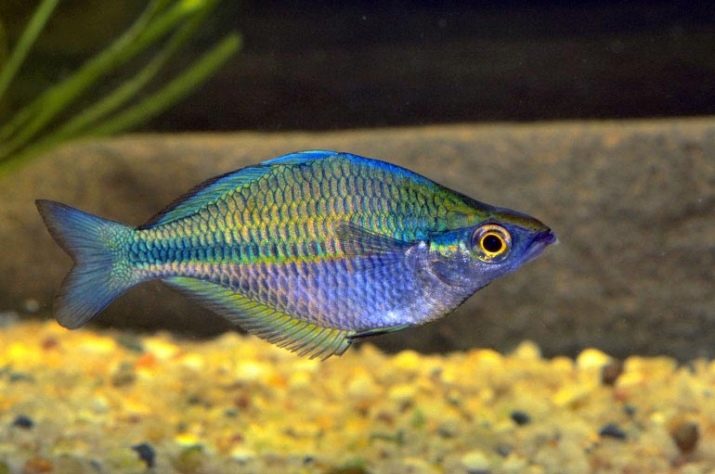
- Boesman's melanothenia relatively recently became known to the general public. In its homeland - in West Irian in the territory of Indonesia - Boesman's rainbow lives in only three rivers and is under threat of extinction. The first fish brought to Europe served as the basis for obtaining hybrid individuals. The length of the adult iris reaches from 80 mm to 110 mm. The fish is painted in two shades: the blue color from the head to the middle of the body flows into orange-yellow on the back half.
For a comfortable living of Boesman's flock of rainbows, a low aquarium with a volume of 110 liters or more, filled with relatively hard, slightly alkaline and slightly mobile fresh water with a temperature of 27 ° C to 30 ° C, is required.
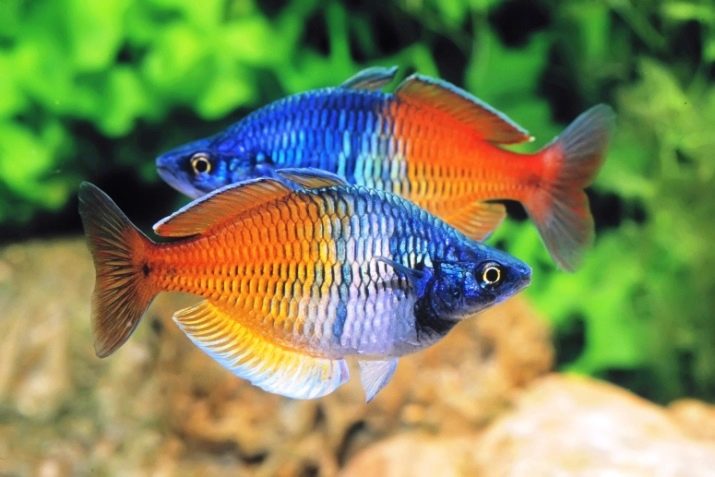
- Three-band iris distributed in all freshwater bodies of Northern Australia. In its natural environment, the length of the fish is about 150 mm, while the aquarium three-strip reaches only 120 mm in length. The color of this fish varies depending on the habitat and diet. Of the shades, blue, green, red and yellow predominate. But regardless of the color of the scales, all fish have red fins and dark longitudinal stripes. For one flock of fish of 5-6 individuals, an aquarium of at least 150 liters is required.
The water in the aquarium should be moderately mobile, fresh, hard, with a slightly alkaline reaction. Temperature range from 24 ° С to 33 ° С.

- Red iris (Aterina red) inhabits Lake Sentani and nearby bodies of water in New Guinea. The bright fish up to 150 mm long is red in males and yellow in females. The alpha male of the flock has the brightest color. It is noticed that when the temperature decreases to the lower permissible limit, the red color becomes brighter in all males of the flock, while with an increase in brightness, only the alpha remains. The aquarium required for this variety must be at least 150 liters. Water is needed fresh, of medium hardness, with a temperature of 22 ° -25 ° C, and immobile.
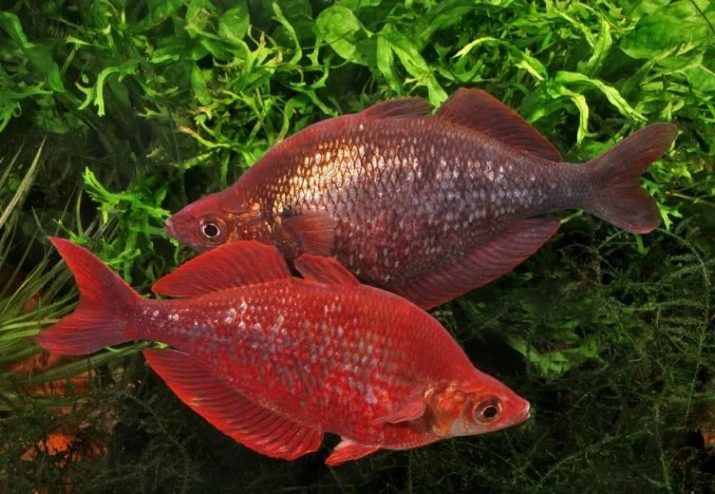
- Iris Popondetta (Fork-tailed Blue Eyes) outwardly similar to an albino with large blue eyes. The body of the fish is translucent with yellow fins. The belly of the fish is the color of a ripe raspberry. In its natural environment, it is endemic to the eastern tip of the island of New Guinea. The fish is small - only 40-60 mm long. Prefers fresh, hard waters with a slightly alkaline reaction. Water temperature in the range of 24 ° -28 ° С. The volume of an aquarium for a flock of 8-10 individuals needs at least 60 liters. Water movement should be weak.
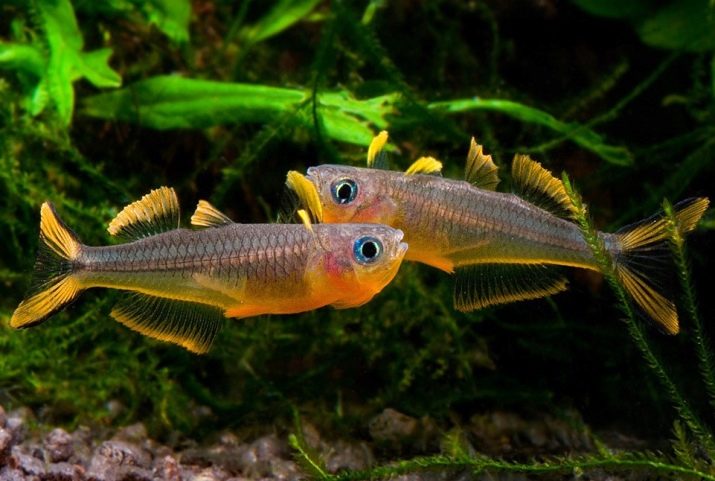
Features of the content
All the variety of iris is distinguished by its unpretentious content. For a comfortable stay of a flock of iris from a minimum of 6 individuals, a fairly spacious aquarium is needed, since the fish are very mobile. It is best to use containers with a volume from 100 to 150 liters. Cover the aquarium with a lid to protect it from accidental jumping out.
It is better to use a dark, monochromatic primer. The light should be diffused.
Rainbows look most beautiful against a dark background among aquatic greenery in dim lighting. At the bottom of the aquarium, you can place driftwood and large stones without sharp edges.

Plants for iris are better to choose with hard leaves. Anubias, Echinodorus or Lagenander Meebold are suitable so that the fish cannot eat them. There can be a lot of greenery at the bottom and on the surface, but it is better to arrange it in groups, leaving open areas of water.
Mostly iris live in a sedentary aquatic environment, therefore it is necessary to choose equipment for an aquarium, focusing on this fact.
The color of the iris depends on the quality of the water. To keep the rainbow alive, it is necessary to regularly filter and partially replace the old water with fresh water.
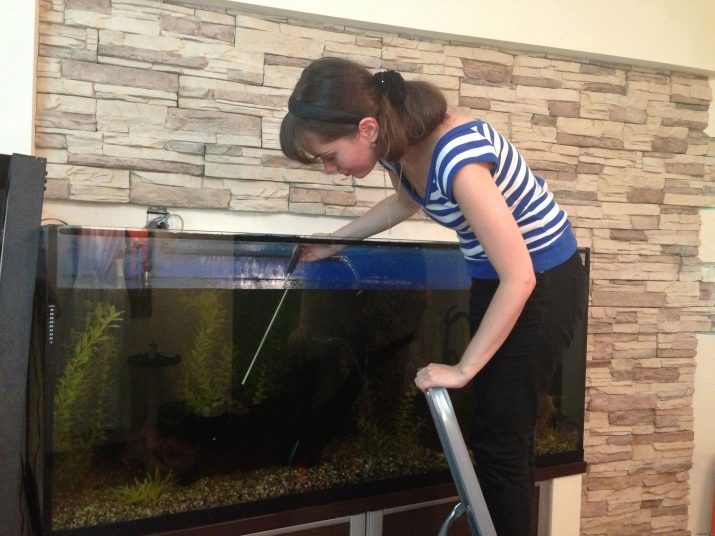
In nutrition, melanothenia are unpretentious, they can eat almost everything. Any dry, live or frozen food is suitable for them. With pleasure, the fish absorb the soft leaves of aquatic plants. When feeding is best mix different types of food to give your fish a choice. With such a variety, irises reveal their most beautiful colors.
It is easy to care for the iris. All care is in timely feeding and water purification.
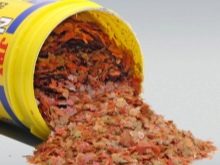


Compatibility with other fish
Iris - small, peaceful schooling fish... They easily get along with any non-aggressive fish, similar in temperament and size. They can coexist next to scalars, provided that they grew up together, but the young in this case are guaranteed to suffer.
Melanotenia they coexist well with zebrafish, barbs, guppies, swordtails, mollies and other species of pecilia that prefer hard water.
Rainbows get along well with Tanganyik cichlids.
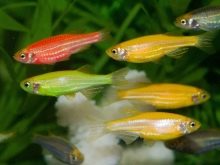
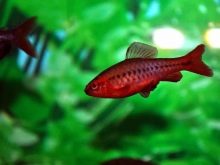
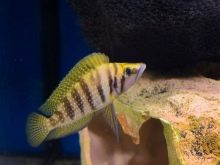
Bottom calm fish, for example, corridor catfish, bots and ancitruses, will occupy the empty lower zone of the aquarium, since irises prefer the upper layers of the aquarium for life.
For sluggish fish, iris will cause inconvenience due to their mobility. The iris does not get along with cichlids, goldfish and catfish.
Melanothenia will not survive next to predatory fish, as they are too tempting as hunting prey and food.
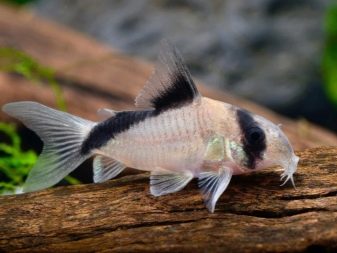
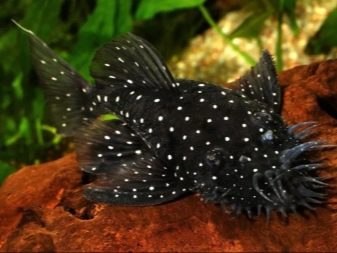
Breeding
The iris is an absolutely non-capricious fish, so it can spawn both in a separate spawning grounds and in a general aquarium.
The most favorable conditions for stimulating reproduction are as follows:
- frequent replacement of part of the water;
- a rather sharp increase in temperature by a couple of degrees;
- medium hard water;
- pH is neutral or slightly alkaline;
- enhanced nutrition for future parents.
The most well-fed and bright fish are selected for reproduction. Sex differences in irises are not clearly expressed, but every year it becomes easier to distinguish a female from a male. Males are larger and have brighter shades.
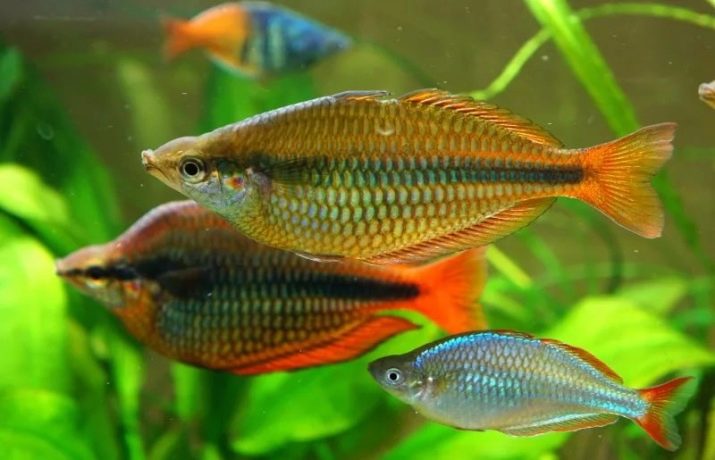
After mating, the female spawns eggs collected in ribbons with the help of an adhesive thread. The total number of eggs is up to 600 pieces within 2-3 days. Spawning can last longer, but not so actively. The roe ribbons are deposited on the leaves of aquatic plants.
The eggs are transferred to an incubator, where the water level is 15 cm, and in composition it does not differ from the spawning ground. Dead eggs are removed, which differ from live ones in white. After 5-7 days, larvae hatch from the fertilized eggs, which become fry within 2 days.
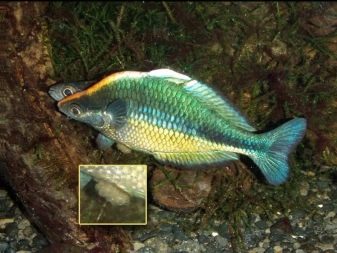
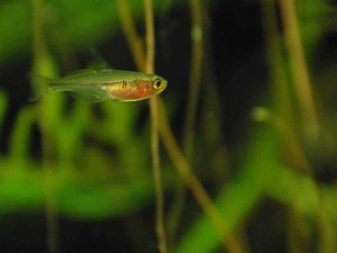
The fry are fed with ciliates and liquid feed for fry until they grow up to the ability to consume microscopic worms, brine shrimp, tubule, egg yolk and very small granulated feed.
After 1.5-2 months, the fry acquire an adult color and are ready for reproduction by 7-9 months.
It is important to remember that iris are susceptible to interspecies crossing.Therefore, it is necessary to carefully approach the breeding process, since hybrids can lose their colorful properties of scales.
See below for the contents of the iris.








